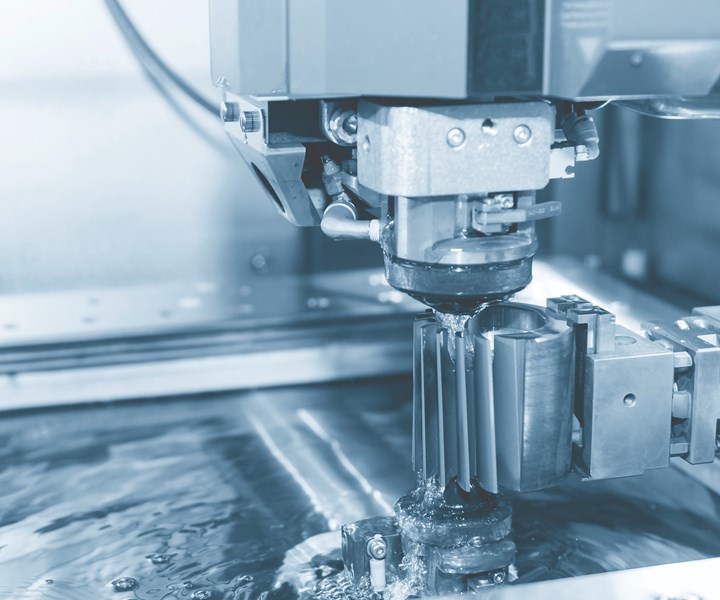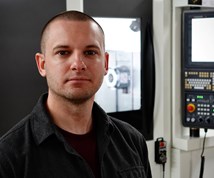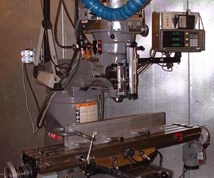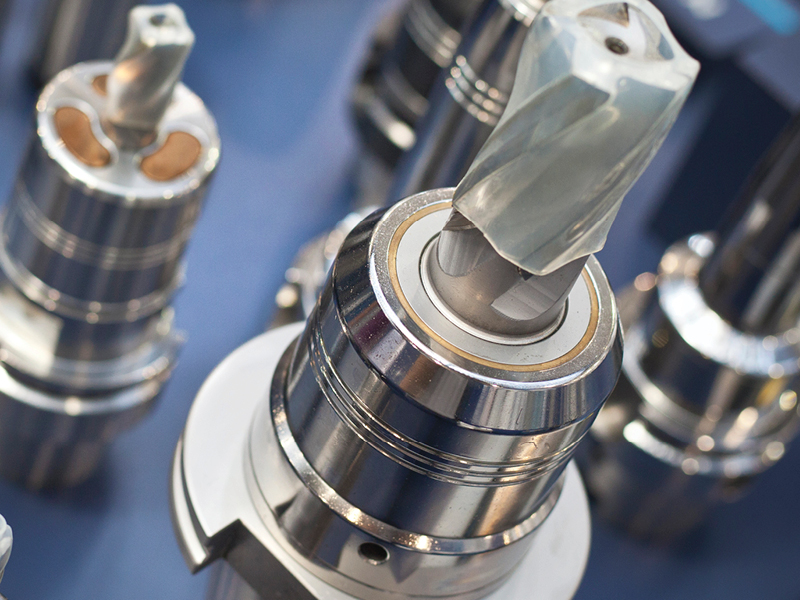Buying a Wire EDM, Part 4: Dielectric Fluid & Maintenance
Removing the microscopic particles made during the wire EDM cutting process becomes a key factor in maximizing cutting speed as well as attaining part accuracy and surface finish. Dielectric fluid is the mechanism for flushing these “chips” away.
#Basics

This blog post is adapted from an article by Barry Rogers that appeared in the May 2018 edition of the Machine/Shop print supplement to Modern Machine Shop.
The dielectric fluid, or coolant, used in the wire electrical discharge machining (EDM) process, is deionized water. It serves several purposes:
- It acts as a semiconductor between the energized wire and the workpiece to maintain stable and controlled conditions for ionization in the spark gap.
- It can be chilled to keep the wire, workpiece, worktable and fixtures at a steady temperature. This limits the thermal growth of the workpiece and machine in order to hold tight tolerances.
- It acts as a flushing agent to wash away the ashy debris created as cutting occurs.
When a machine is commissioned, distilled or deionized water with low conductivity is used first. Subsequently, tap water can be used if first passed through a deionizing resin bottle to filter out any contaminants and neutralize particles with an electrical charge. The water then circulates through a 3- or 5-micron paper filter to remove any remaining particles. Most machines are equipped with 5-micron filters.
Featured Content
Because EDM creates microscopically small particles during the cutting process, removing these “chips” becomes a key factor in maximizing cutting speed as well as attaining part accuracy and surface finish. To be an effective flushing agent, the dielectric fluid must flow freely into the zone where the cutting action occurs. Because each spark melts away a microscopic bit of the workpiece, the fluid helps solidify the molten particle and keep it from adhering to the wire or the workpiece surface.
Adjustable flushing nozzles, which are located close to the top and bottom of the workpiece, direct a stream of fluid into the cutting zone from opposite directions. When the flushing pressure and nozzles are set properly, the two streams meet in the middle, creating a “rooster tail” effect that is visible on the slug removed after the roughing pass. If debris is coming mostly out of the bottom of the part when cutting a solid, flushing may be unbalanced. This creates poor cutting conditions where the wire has been most weakened as it passes through or across the workpiece surface. Frequent wire breakages can result.
Setting the flushing pressure too high can induce vibration and deflection of the wire, especially in tall workpieces. This condition will affect the surface finish and accuracy of the part.
EDM Filtration
To get the best performance from a wire machine, the user must maintain the cleanliness of the dielectric fluid. If it gets too dirty, some materials will start to rust in the tank, and surface finish may deteriorate. For example, cutting aluminum raises the conductivity of the dielectric fluid quickly. When this happens, the deionizing bottle must be changed promptly. Good maintenance practice includes periodically replacing the paper-filter cartridges and sending out the deionizing bottle for regeneration.
Cutting certain materials will clog filters rapidly. For example, when cutting additively manufactured parts, an internal pocket of loose, unsintered metal powder may be penetrated. The sudden release of this powder into the fluid can clog the filter unexpectedly.
Today, the cost of a filter ranges from $85 to $120.
Wire EDM Maintenance
For the most part, wire EDM units require little maintenance. Some important maintenance items include cleaning the orifices in the wire guides and the surfaces of the power contacts. Power contacts should be indexed every 50 to 100 hours of cutting time. The wire rethreading mechanism should be checked and adjusted periodically. Follow the OEM’s recommendations faithfully. Expect to spend a modest amount of time on maintenance for each machine on a weekly basis, more often if machines are running more than eight hours a day.
RELATED CONTENT
-
EDMing Beryllium Copper: An Introduction
Beryllium copper offers many benefts to the moldmaker and plastic injection molder, yet questions remain on how to best EDM it, which alloy to specify, where to use it, and is it safe to work with?
-
Use Your Machinists to Make Dies
By systemizing die making into repeatable steps, Dies Plus, a division of Otto Engineering, is using its machinists to effectively make dies. This solution relies on a paperless color-coding system to convey the tolerances machinists need to hit in order for tool and die makers to do the final fitting.
-
Non-Traditional Methods For Making Small Holes
Consider these alternatives when conventional drilling can't do the job.











 (1).1676494398075.png)

